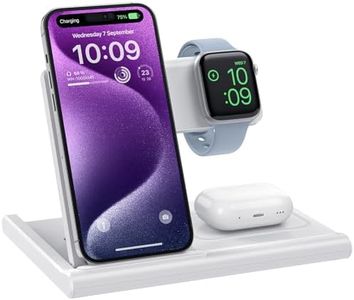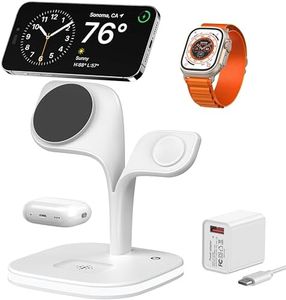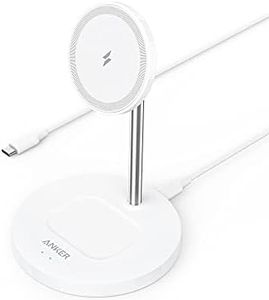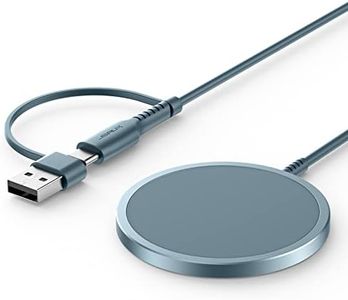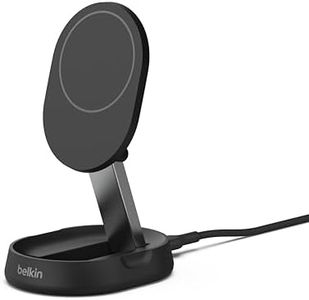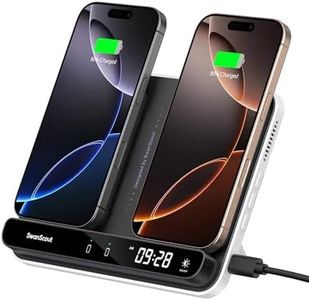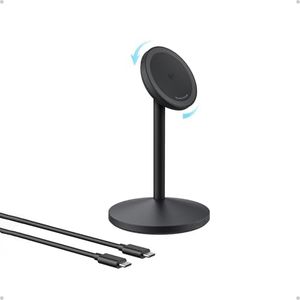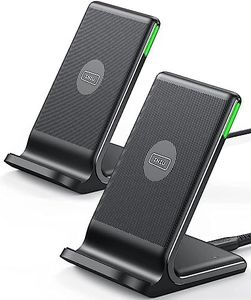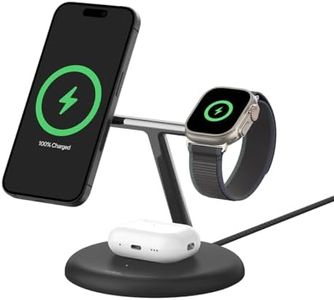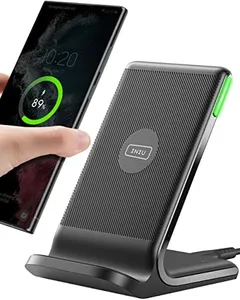We Use CookiesWe use cookies to enhance the security, performance,
functionality and for analytical and promotional activities. By continuing to browse this site you
are agreeing to our privacy policy
10 Best Wireless iPhone Chargers
From leading brands and best sellers available on the web.Buying Guide for the Best Wireless iPhone Chargers
Picking a wireless charger for your iPhone can make charging more convenient and reduce cable clutter. Wireless iPhone chargers use magnetic induction to pass energy to your phone without the need to plug in a cable. When choosing the right charger, consider how you plan to use it, where you'll place it (at home, on a desk, in the car), and any extra features that might enhance your charging routine.Charging Speed (Wattage)Charging speed, usually measured in watts (W), refers to how fast the charger can power up your iPhone. Higher wattages can charge your phone faster, but not every iPhone supports the highest speeds, and excessive speed isn’t always best for battery health. Typical segments are 5W (slower, but safe and good for overnight charging), 7.5W (the standard for most iPhones), and 15W or higher (optimal if supported by your phone, especially newer models and some MagSafe-compatible chargers). To pick the right speed for you, match the charger’s wattage to your iPhone’s maximum supported wireless charging rate and think about your charging habits: if you need quick top-ups during the day, higher wattage is better; if you charge overnight, standard speeds are just fine.
CompatibilityCompatibility describes whether the charger can work with your iPhone model and possibly other devices too. Some chargers are specifically MagSafe-compatible, meaning they magnetically snap onto newer iPhones for precise alignment and faster charging. Others work with the more general Qi standard, which is widely compatible with many smartphones including various iPhones and even AirPods. Make sure the charger supports your iPhone model’s wireless charging method. If you want to charge non-iPhone devices too or share it with someone with another brand, a broader Qi charger may be more versatile.
Charger Design (Pad, Stand, Multi-device)Wireless chargers come in various shapes, including flat pads you lay your phone on, stands that prop up your phone (useful for video calls), or multi-device stations that let you charge your iPhone, Apple Watch, and AirPods at once. Flat pads are good for bedside tables; stands are better for desks; and multi-device chargers are ideal for those with several Apple gadgets. Think about where you’ll use the charger and if you want to charge more than one device at a time. Your needs and space will guide the design that fits best.
Cable and Adapter IncludedSome wireless chargers come ready to use with an included cable and wall adapter, while others provide only the charging pad, meaning you’ll need to use your own cable and adapter. Having everything included is more convenient, but if you already have a quality adapter or want to match wattages, you might not need a bundle. Make sure the charger’s adapter (if included) matches the charger’s maximum speed for proper performance. Your decision should be based on what accessories you already own and how turn-key you want the setup to be.
Build Quality and Safety FeaturesBuild quality refers to how sturdy and reliable the charger feels, while safety features protect your phone from issues like overheating or short-circuiting. Look for features like temperature control, foreign object detection, and certifications (such as Qi certification) for peace of mind. A solid build with protective features is important if you'll use the charger daily or leave it running overnight. Choose a charger that feels robust and offers necessary safety features for your environment and usage patterns.
PortabilityPortability captures how easy it is to take your wireless charger with you. Some models are slim and lightweight for travel, while others are bulkier but offer more features. If you want to charge your phone at work, school, or while traveling, look for a charger that's light and compact, perhaps with a detachable cable. For home or permanent setups, size and weight matter less. Think about how and where you want to use the charger, and pick one that fits your mobility needs.


